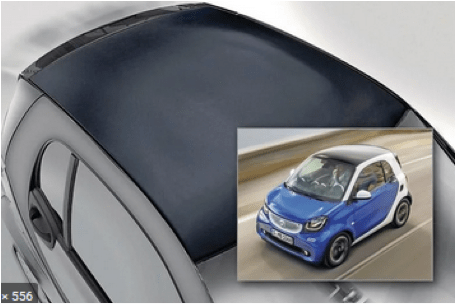Digital transformation of the paper eco-system: Case study Felix Schoeller Group “A 2000 year old material is being reinvented and becomes smart”
The digital transformation affects all business eco-systems, including the paper industry. The traditional use of paper is being replaced by digital solutions, in newspapers and journals, in computer printouts and in payments: paper is on the decline across the board, even tax authorities accept electronically completed forms. The paper industry has to reinvent itself and is coming back as a digital industry with smart products and IP design plays a crucial role in this, as does the MIPLM case study with the Felix Schöller Group „Digitalization in the industrial process chain for paper“.
 The business model of the paper industry, which has been stable for decades, has not required radical product and process innovations for a long time, the whole topic of innovation culture was not really anchored in the industry, but the need to rethink that is all the stronger today, it is tantamount to a cultural revolution. The paper industry is very diverse, from newsprint to corrugated base paper. A distinction is made between graphic papers, which include envelopes and newspapers, from packaging papers such as cardboard boxes and corrugated cardboard, hygiene papers such as kitchen rolls and special papers such as banknotes or coffee filters.
The business model of the paper industry, which has been stable for decades, has not required radical product and process innovations for a long time, the whole topic of innovation culture was not really anchored in the industry, but the need to rethink that is all the stronger today, it is tantamount to a cultural revolution. The paper industry is very diverse, from newsprint to corrugated base paper. A distinction is made between graphic papers, which include envelopes and newspapers, from packaging papers such as cardboard boxes and corrugated cardboard, hygiene papers such as kitchen rolls and special papers such as banknotes or coffee filters.
Since the last boom around the year 2000, when newspaper publishers were inundated with advertisements, the Internet has made this form of communication and advertising practically obsolete. At the same time, a new understanding of raw materials, sustainability and plastics has developed over the past 20 years. Paper is light, amazingly flexible and stable. The high water and energy consumption in production has continuously decreased in recent years. Today you can find paper practically everywhere, for example in automobile and aircraft construction. The roof structure of the current Smart, for example, is made of paper with a sandwich honeycomb structure.
Paper also plays a decisive role in smart packaging. Paper is taking on more and more functions in packaging: the box and the brochure are becoming intelligent. For example, with drug packaging in the August Faller Group’s case study: Medical Prescription. The patient is reminded of the correct time to take the medicine and the packaging also alerts them when it is time to order a new prescription. The tablet box has an e-paper display and electronic controls. In a networked world, packaging communicates with consumers and other devices as well as with the Internet. A multitude of new use cases and completely new customer journeys are possible under the keyword Internet of Things. With smart packaging, for example, online retailers have almost limitless possibilities to interact with customers, to record customer data and to retain them in the long term.
One also speaks of extended packaging,, i.e. packaging with additional benefits. This is now also available in product brochures or other applications. The Cambridge-based startup Novalia has printed keyboards for the iPad, which are printed on A4 paper with conductive ink.
Intelligent packaging has an intelligence that goes beyond the packaging task. Usually it is about communication with the outside world. For example, diagnostic and indicator functions which help monitoring the condition of the packaged goods. Retailers and consumers recognize the quality of the goods due to the integrated tightness / time / freshness / temperature indicators. Augmented reality elements in packaging go one step further. They are understood to be visualizations that virtually complement real images on smartphones or tablets. Similar to the Novalia keyboard, a Bluetooth chip was integrated into an Audi brochure, creating an augmented reality experience for the AudiTT.
The digital transformation has captured paper along the entire value chain and turned it into a complex eco-system in which patent strategies play a decisive role for the future position. The examples show that the potential of paper is far from being exhausted. Digital twins are used along all stages of production to enable functional extensions and process optimizations. A virtual twin is created during the conception and design of products and processes and accompanies the real twin throughout the entire life cycle. Today, digital twins are largely understood as images of machines and components or products in the cargo industry (automobiles, robots, plant engineering, electrical appliances) and are used there as the basis for the smart factory. The manufacturers of systems, machines, units and measurement technology are also driving the development of digital twins in the paper industry and new and expanded patent protected business models based on them such as “Performance Contracting”, “Predictive Maintenance”, “Product Life-cycle Management”, ” Total Cost of Ownership “or” Condition Monitoring “.
Every product, in this sense also the raw materials and products of the paper industry, produces a digital shadow through material parameters, material condition data, process data etc. Just as the real material (pulp) and paper machine (plant) interact with one another, so can the digital Twin communicate with the digital image of a machine. If material data is merged with process data (machine data, sensor data and ambient data), then this is an essential prerequisite for influencing the quality of the end product at all times. Anytime means both during ongoing production for quality assurance, optimization, or reaction to deviations in individual process components (process reliability) as well as during product development and process planning. Based on a digital image, quality can be completely thought ahead – “Predictive Quality” in the broader sense.
How it works at the Felix Schoeller Group, one of the world’s leading manufacturers of specialty paper, in particular photo paper and decorative paper, and which patent strategy is behind it based on a digital use case with IP design, you can see in the case study: “Digitalization in the industrial process chain for paper”.
The authors of the case study are:
 Prof. Dr. Alexander J. Wurzer
Prof. Dr. Alexander J. Wurzer
Dr. Wurzer is Professor for IP Management at the Centre for International Intellectual Property Studies (Centre d’Etudes Internationales de la Propriété Industrielle, CEIPI) at the University of Strasbourg, where he has been program leader for the Master’s degree in Intellectual Property Law and Management (MIPLM) since 2007. Prof. Dr. Wurzer is Director of the Steinbeis Transfer Institute for Intellectual Property Management at Steinbeis University Berlin. He is Managing Partner at WURZER & KOLLEGEN GmbH, a consulting firm for strategic IP management.
Prof. Dr. Wurzer is Chairman of the DIN 77100 committee for patent valuation, and DIN 77006 for Quality of Intellectual Property Management Systems. He is a member of the Board of Directors of “Deutsches Institut für Erfindungswesen e.V.” (D.I.E.), as well as the Board of Trustees of the Diesel Medal Awards. He is Fellow at the Alta Scuola Politecnica of Milan/Turin Politechnic. He is a member of the group of experts on “IP Valuation” of the European Commission and the Patent Law working group of the University of Düsseldorf, as well as the working group for Patent Valuation of the Licensing Executives Society (LES) and a member of the Advisory Board of the Innovation Manager Magazine of the F.A.Z. Institute.
 Gerhard Hochstein
Gerhard Hochstein
Gerhard Hochstein is serving the Felix Schoeller Group since 2016 as CTO and Managing Director of the Schoeller Technocell Gmbh & Co. KG, being responsible for R&D, Business Development, IP-Management, Engineering and other supporting functions. Before, he worked as Consultant for Innovation Management and many years in the printing industry in technical management functions.
 Dr. Michael Kloskowski
Dr. Michael Kloskowski
In 2014 Dr. Kloskowski started working at Schoeller Technocell GmbH & Co. KG as R&D Manager and is responsible for the IP Management since 2019. Before, he worked for the foundry supplier ASK Chemicals GmbH as head of R&D foundry coatings and OpEx for coating and additive production. He studied at the WWU Münster and worked for Prof. B. Krebs during his PhD thesis.



